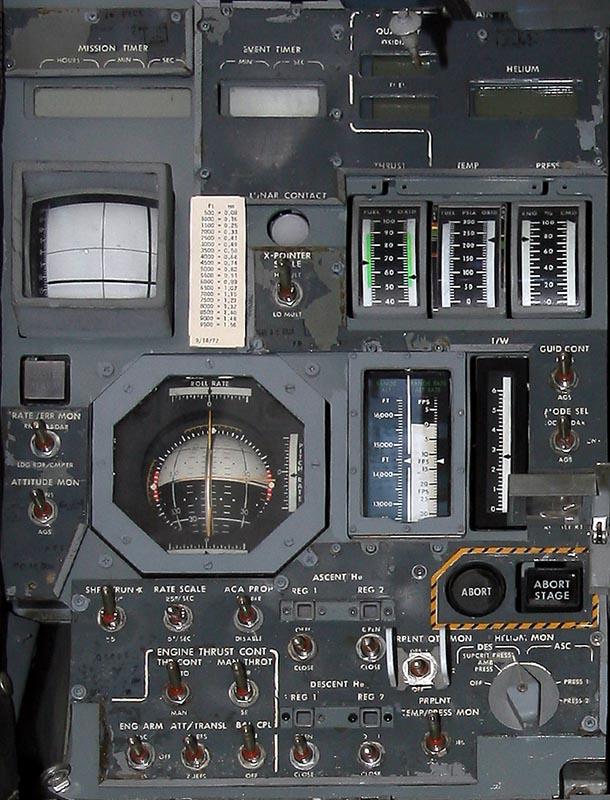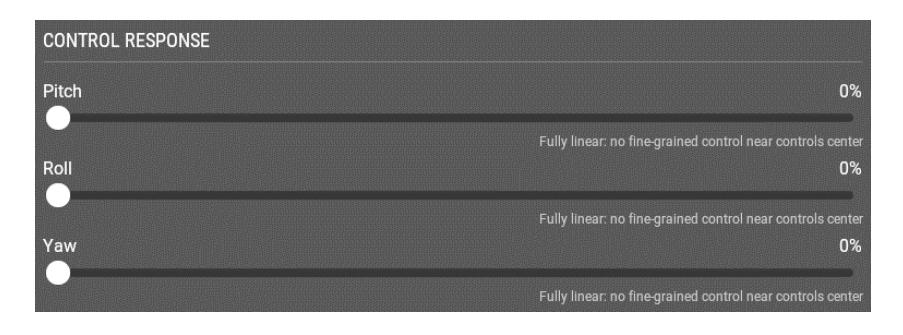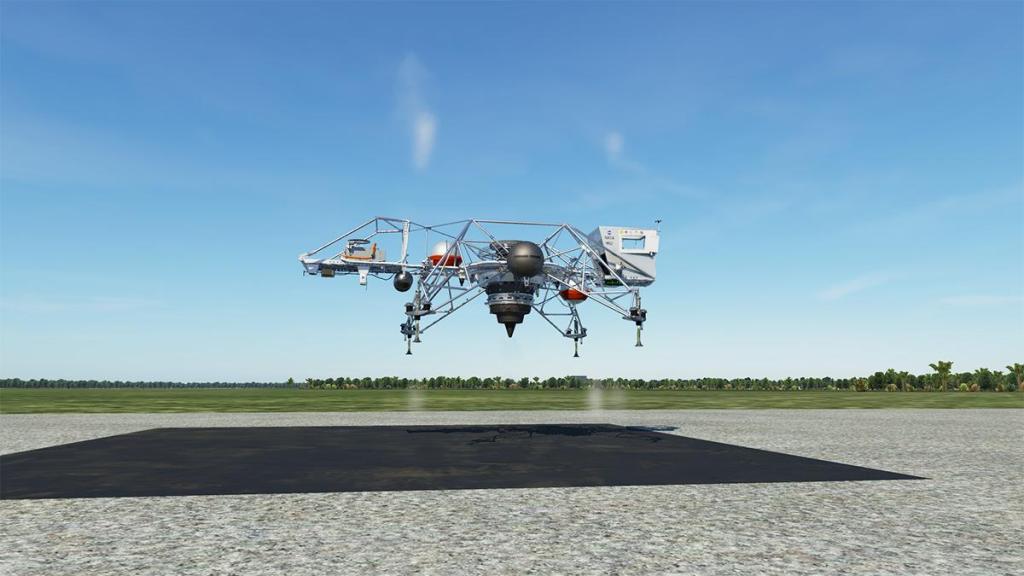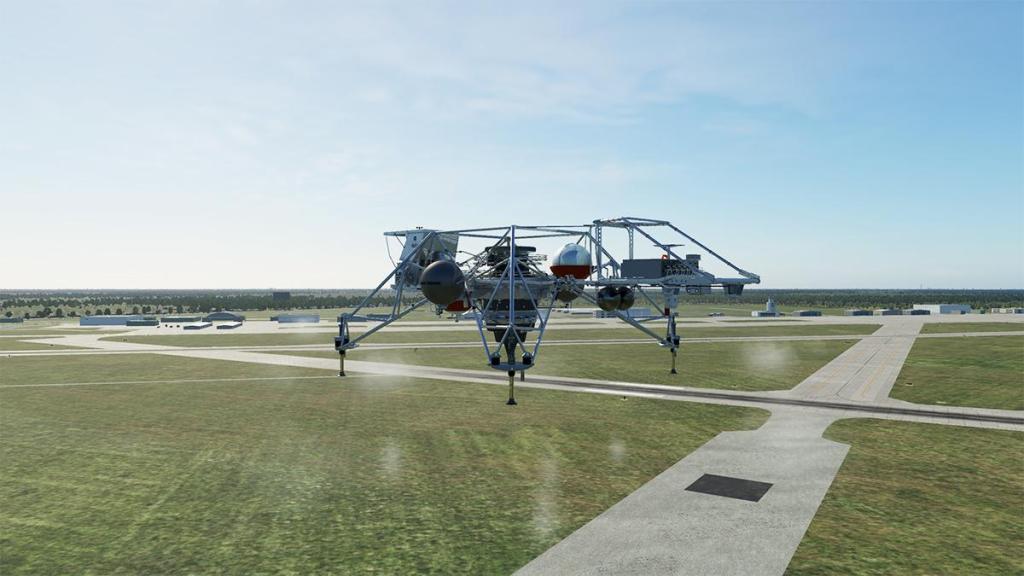Search the Community
Showing results for tags 'nhadrian'.
-
Experimental Vehicle Review : LLTV - Lunar Landing Training Vehicle by NHAdrian It was a moment of inertia. A pause in the air that could have changed history as we know it. It is 6th May 1968 at Houston’s Ellington Air Force Base (AFB) in Texas. As the strange web framed vehicle was now suddenly frozen at 200ft above the ground with the sudden loss of helium pressure, that then caused the depletion of the hydrogen peroxide that was used for the reserve attitude thrusters. The pilot only had one option, "to get the hell out of there", he did so by ejecting upwards as the machine twirled downwards into the ground and violently exploded beneath him, he landed safely by parachute with only a few aches to his back and a bit tongue from the intense jerk upwards... in two hours he was back at his desk at the Houston Space Centre, doing paperwork. The pilot in question here was Neil Alden Armstrong. The same person that commanded the Apollo 11 mission, during which he became the first man to set foot on the moon (20th July 1969). That infamous moment was captured on film, observing it closely, you saw the nerves of steel to defeat the jaws of death, just like Armstrong had done a few times before. In Korea, as he was making a low bombing run at 350 mph (560 km/h) when 6 feet (1.8 m) of his wing was torn off after it collided with a cable that was strung across the hills as a booby trap. He planned to eject over the water and await rescue by Navy helicopters, but his parachute was blown back over land. A jeep driven by a roommate from the flight school picked him up. Then again in a Boeing B-29 Superfortress, which was to air-drop a Douglas D-558-2 Skyrocket. Climbing to 30,000 feet (9 km), the number-four engine stopped and the propeller began windmilling (rotating freely) in the airstream, then the propeller disintegrated. Pieces of it damaged the number-three engine and hit the number-two engine. Butchart and Armstrong were forced to shut down the damaged number-three engine, along also with the number-one engine, due to the torque it created. They then made a slow, circling descent from 30,000 ft (9 km) using only the number-two engine, and landed safely. Then the most dangerous moment of all in orbit in Gemini 8. While out of contact with the ground, the docked spacecraft began to roll, and Armstrong attempted to correct this with the Gemini's Orbit Attitude and Maneuvering System (OAMS). Following the earlier advice of Mission Control, they undocked, but the roll increased dramatically until they were turning rotations about once per second, indicating a problem with Gemini's attitude control. Armstrong engaged the Reentry Control System (RCS) and turned off the OAMS. Mission rules dictated that once this system was turned on, the spacecraft had to reenter at the next possible opportunity. Armstrong was a cat that had 10 lives, so they sent him to the moon, were he saved the long landing in the LEM (Lunar Excursion Module) and made history, which brings us to our weird looking machine in this review. The Bell Aerosystems Lunar Landing Research Vehicle LLTV (nicknamed the "Flying Bedstead") was a Project Apollo era program to build a simulator for the Moon landings. But lets clear something up first. There was five of these vehicles built, the first two were the LLRV or "Research Vehicle". Then later three more were commissioned and called LLTV or "Training Vehicle", they are in design almost identical, but the LLTV's were slightly improved and the forward Styrofoam cockpit enclosure (to simulate the LEM's cockpit) had also the roof removed, to stop an excessive yawing force. Secondly they also had a new mode introduced, called "Lunar Simulation Mode"... of which we will see later. Built of aluminum alloy trusses, the LLRVs (and LLTV) were powered by a General Electric CF700-2V turbofan engine with a thrust of 4,200 lbf (19 kN), mounted vertically in a gimbal. The engine lifted the vehicle to the test altitude of 500ft, and was then throttled back to support five-sixths of the vehicle's weight, simulating the reduced gravity of the Moon. Two hydrogen peroxide lift rockets with thrust that could be varied from 100 to 500 lbf (440 to 2,200 N) handled the vehicle's rate of descent and horizontal movement. Sixteen smaller hydrogen peroxide thrusters, mounted in pairs, gave the pilot control in pitch, yaw and roll. The LLTV is an ungainly insect like machine. Really well designed and produced here by NHAdrian, a developer known for his quirky but very interesting machines, a flying AirCar anybody? The LLRV evolved out of the Bell X-14 (Bell Type 68) experimental VTOL aircraft, but it had problems with ground effects. The X-14 had the reverse effects of helicopters, in that when close to ground, a helicopter needs less power to stay aloft, were as the X-14 needed exactly the opposite in a huge amount of downward thrust. The LLRVs were built by Bell Aerosystems and were used by the FRC (Flight Research Centre) now known as the NASA Armstrong Flight Research Center, at Edwards Air Force Base, California, to study these VTOL dynamics. Helicopters were the obvious choice to simulate Lunar Control Characteristics. And astronauts at the time who were very familiar with helicopters, pushed heavily for them to be used as the LEM training vehicles. But Dick Day the simulations expert at the FRC, pushed heavily for the LLRV to become the better (or correct) vehicle to do the LEM simulations. The person put in charge of the conversion was no other person than Neil Armstrong (the reason he was not on the Apollo 1 fire committee) and was and in the early part of the LLTV "Design Engineering Inspection" that was the selection committee for the program. He quickly deduced that to build a fully modified LEM Trainer, which he called "prohibitively time consuming and expensive" was not the answer, and noted that the characteristics of the LLRV was not at all that different in physical size, and had the same control rocket geometry from the Lunar Lander. When the earlier VTOL program had been completed, the two LLRV's were shipped to Houston in December (12th) 1966, and three new vehicles in trainers with modifications were ordered by NASA, these were the LLTVs, all five machines were used in Lunar training. The earlier LLRV's were reassigned as LLTV A1 and LLTV A2, the new LLTV's were designated LLTV B1, B2 and B3. Neil Armstrong's strong views against Helicopters was against the current normal thinking. This was because Armstrong was noted as a "Engineer Pilot", and not a "Training Pilot", so basically Helicopter pilots were flying Lunar Simulations on Earth, were as Neil Armstrong was studying and flying Lunar Simulations on the Moon. It was a critical assignment that produced an Historic moment. He of course later had that vexatious moment in LLTV A1 in the final 100 ft of descent going into land when his controls had suddenly degraded. By a rule Apollo Commanders had twenty-two flights to certify them for the mission, but for backup commanders in the later stages of the program, these numbers of flights were reduced to maybe a dozen. The LLTV's design is beyond simple, a frame holds the CF700-2V and surrounding it are the four downward facing HP thrusters (earlier LLRV had only two), then the clusters of HP directional thrusters are positioned on the outer frame, it is all a very spacecraft LEM like in design. Tanks hold the Jet-A1 fuel and the twin globes of Hydrogen Peroxide (HP) are outer centre, rear is balance weights and the large equipment/avionics pack. The whole design has been intricately recreated for your flying pleasure, everything is perfectly done here, like noted, very simple, but intricate at the same time to get it all perfectly authentic... and yes you can spend a lot of time just looking at all of the design and on how it all works, this is one clever aspect of a Simulator, as you have almost the real thing on view for your inspection. Can this be called a cockpit? sort of. The original LLRV just had the pilot hanging out on the front on the frame, in the LLTV version is was boxed in to recreate the feeling of the inside of the LEM. The light metal frame construction and riveting is totally excellent, and note the nice touch of the Apollo mission patches... but there is an important one missing? An oversight or just a small trivia question by the developer? The cockpit layout is very familiar if you are also familiar with the LEM's controls. The hand controls both sides, and the instrument box right. Left side here are two levers, the "Lift Engine Control Lever", and the secondary "Lift Thrusters Control Lever" known as the "T-Stick". Top left panel is the CB Control Panel, with Circuit Breakers (fuses) and system switches. Note the rear COM Radio with 25khz and 8.33 khz modes and fuel cock lower. The "Main Control Panel" covers Battery A/B and Generator A/B switches, Altitude Controller over-ride, Lunar Simulation wind compensation switch, Helium Isolation valve, Altitude Thrusters operations mode, Inverter A/B switches, Pitch/Roll AHRS source, Artificial Horizon source and Altitude controller rate sensitivity adjustment knobs for; Pitch, Roll and Yaw. Right side is the "Main Instrument Panel", from top; Engine Fire annunciator and test button, HD quantity indicator, Annunciator Panel, Lateral/Forward velocity indicator, lift rockets chamber pressure, Helium Pressure, analog stop-watch/button cycle, Artificial Horizon, Radio Altimeter and V/S (vertical Speed) indicator, Thrust-to-Weight ratio indicator LSM mode, EGT (Exhaust Gas Temperature gauge), Oil Pressure, Analog Altimeter, Analog Variometer, N1 Indicator, Jet fuel quantity and aft Jet fuel quantity. On the right is the actual LEM panel for comparison, and the main flying instruments in layout are almost identical. The Annunciator panel has 4x4 block of warnings and failures. Note the "LUNAR MODE" selection. Bottom right is the "Right Control Panel". It includes; "Attitude Control mode switches", DC Volts and AC Volts, "Source Switch A/B and finally the same famous "Ground Contact" light. Right hand joystick is fully animated in forward-back and left/right movements, as is the well done NASA pilot in his arm movements... let us call him "Neil". You can hide "Neil" by pressing the seat base, but be careful, it is very easy to mix up the hotspot of the "Ejection Seat", and just disappear. If you move the slider on the pilot's helmet... it will push down the visor, also then go into "Sunglasses" mode, in dimming the view, honestly I'm not sure about this while flying, as you need as much a clear view as possible, and an option to turn it off, but the idea is very clever. _____________ Installation and Settings In X-Plane, you will find the LLTV in the "VTOL" section at the bottom of the "Flight Configuration" page. There are no liveries (laughs) LLTV Authorization is standard with a key, then a restart is required. Control settings are for all the "Control Response" (Pitch,Roll and Yaw) sliders to be at the minimum setting, and at least "5 Flight Models" per frame, it is highly recommended to have at least a 30 frames or more capacity, if not it will struggle to simulate. The LLTV fuel and weights are setup via the X-Plane "Weight, Balance & Fuel" Page, the HP is top, and the Jet Fuel is set lower, note the correct CoG (Centre of Gravity). If you have (or I recommend) a 3-Axis Joystick... then move your Yaw axis to the Joystick X-Axis from the rudder pedals for an authentic feel of the machine, the LEM did not have rudder pedals as both pilots stood up side by side together. A final tip is to set the "Lunar Simulation Mode" to a Toggle or "On/Off" switch, I used the hat on my joystick, the custom command is available and as all the usable "Custom Commands" are noted in the manual. This action will reduce the distraction of the switch between the different modes, and keep your hands on the controls. ____________________ Flying the Lunar Landing Training Vehicle I found that before every flight you have to set your fuel quantity, it resets back to zero if you don't, in other times also top up the H202 tanks, the LLTV guzzles fuel like nothing else, so this is always your first action. The fuel cock is down under the COM Radio, and this needs to be horizontal for fuel flow, then it is the simple need just to flick up the Ignition switch, then the START ENG switch, the system does the rest of the startup sequence, when done it will settle down around 20% RPM and EGT around 450º The startup whine and thrust from the CF700-2V is very good, then becomes a roar if you add in a bit of throttle, plus there is the puffs and blasts of Hydrogen Peroxide all around the vehicle, and you haven't done anything yet? Increasing the throttle increases the noise and the activity from the thrusters as they intensely fire off (really well done) the HP, and slowly your off the ground... and your first target is just to hover. Honestly it's not that hard, just like flying a drone in every aspect... up/down... hover. Then your just glad to lower the LLTV back onto the ground... safety. Confidence restored, "Lets try that again". This time I hovered far higher, the limits are 500 ft and 2 minutes of fuel, and the clock is ticking. Again it was easy to climb and hold, twist the throttle grip and turn easily in the yaw, left or right... then front or back with a slight dip in each direction... "easy peasy" Trickier is sideways... any slip has to be carefully coordinated, and keeping the vehicle almost upright. Push too far in angle or speed and you will easily lose the LLTV, and there is no coming back, except for an explosive crash on the ground. A note that there is an "Ejection" to do an "Armstrong" and get the "hell out of there". There are two modes, the first is really the "Drone" mode were the LLTV flies basically just like a drone. Second flying mode is called "Lunar Simulation Mode" that is activated on the joystick. The difference between them is that with the first (drone) mode the CF700-2V is locked in it's cradle, so the thrust is completely downwards. In Lunar Simulation Mode (LSM)" the engine is now loose on a Gimbal to still produce the balance thrust, but the vehicle angle can now change, however the engine (thrust) stays relative to the ground to simulate the Moon's gravity (1.625 m/s2, about 16.6% to that on Earth's surface or 0.166 ɡ), to replicate the same propulsion system on the LEM. Several other actions also happen when you initiate LSM, first you change levers to the T-Stick, this lever now controls the downward thrusters and in giving you only control over them (disengages the Jet Engine) and lifts the rockets thrust between 20% and 100% power range. Note... there has been an update, v1.01 now has the animation working that moves "Neil's" hand from the throttle to the T-Stick, and the T-Stick movements are now animated as well... The LSM system won't work unless you are at 500ft (or slightly more), then you flick the switch to change the modes... Then the "Luna Mode" light is illuminated to show you are in the active mode. The transition between modes is seemless, initially you can't tell the difference, but adjust the T-Stick and you are quickly aware of the more heavier thrust at your disposal, with both the Jet engine and thrusters now producing lift, actually altitude control is far more easier, you as you have significantly now more control over the machine, but there is more and more lag in reactions the closer you get to the ground. Yaw and slip is still the same, so be careful... but the flying of the "Bedstead" was far easier than I had imagined, you would love to stay here in this controlled environment all day, but your now guzzling fuel at a ferocious rate, so it is time to descend and do a nice controlled landing. The amount of thrust power is excellent, and in reality you do feel what piloting the LEM would actually be like, I was amazing on the amount of power that was available to you, even on the moon! The trick here of course is to learn an actual moon LEM sequence landing, moving forward and picking your landing spot, controlling the flow of the descent and the angle of approach to a hover position and then a "Contact". It would take a fair bit of practice and familiarity with the LLTV to get that all right, but the adrenalin rush would be worth it, remember the old "Lunar Lander" game, well this is far more better and in 3d, you also have the same limited amount of fuel as well! Armstrong noted on his return from the moon. "Eagle (the Lunar Module) flew very much like the Lunar Landing Training Vehicle which I had flown more than 30 times at Ellington Air Force Base near the Space Center. I had made from 50 to 60 landings in the trainer, and the final trajectory I flew to the landing was very much like those flown in practice. That, of course, gave me a good deal of confidence — a comfortable familiarity" Considering the traumatic events on 6th May 1968, then the LLRV and the later LLTV, were actually very reliable over thousands of test flights. Actually only two crashed, the LLTV A1 (Armstrong) and Test pilot Stuart Present ejected again safely from crashing LLTV-2, 29th January 1971, the surviving rest are listed below LLRV-2 (LLRV NASA 951) is on display at the Air Force Flight Test Museum at Edwards Air Force Base. It was lent to the museum by NASA in 2016. LLTV-3 (LLTV NASA 952) is on display at the Johnson Space Center. A Replica of NASA 952 is in a partially complete state in the aircraft boneyard at the Yanks Air Museum. __________________ Summary So how do you replicate landing on the Moon when you have never actually been there? This was the problem facing NASA in 1966. To build a full trainer of the Lunar Excursion Module, or LEM, that was the lunar descent vehicle, was considered then be too expensive and even impractical. Then came the idea to convert two VTOL experimental aircraft at the FRC (Flight Research Centre) now known as the NASA Armstrong Flight Research Center, at Edwards Air Force Base, California. These were LLRVs, later renamed LLTVs (A1/A2) and to build three more for training lunar astronauts in the skills of using the lunar lander in B1/B2 and B3. The LLTV vehicle is reproduced here by NHAdrian, and brilliantly good it is. This is not a helicopter, more drone in skills, but the "LUNAR MODE" is replicated in absolute realism, in allowing you to practise Lunar Landings on Earth, or to practise this significant skill set, and actually get the feel of what flying the LEM was really like. Sounds and the feel of the machine are simply excellent here (it's very loud), the rocket pulses perfectly synchronised, there are no extras or liveries, but a very well detained machine. The LLTV is also fully VR (Virtual Reality) ready, for an even more authentic immersion. With the update v1.01, the T-Stick in "Lunar Mode" is now also animated as well as the throttle control... It is all very clever, very X-Plane as well, and the modeling detail and systems recreated here are exceptional, it is also very Lunar Lander, the 1979 video game, you get addicted to it, and try over and over again to achieve your goal... of landing on the Moon. Highly recommended, and great authentic fun. __________________________ Yes! - the LLTV - Lunar Landing Training Vehicle by NHAdrian is NOW available from the X-Plane.Org Store here : LLTV - Lunar Landing Training Vehicle Price is US$19.95 Requirements X-Plane 12 Windows, Mac (using Rosetta) or Linux 4GB VRAM Minimum - 8GB+ VRAM Recommended Download Size: 331 MB Current Version : 1.0 (December 1st 2023) Important note for MAC OS X users: please read this article about enabling Rosetta: https://www.x-plane.com/kb/using-x-plane-11-addons-with-x-plane-12-on-mac-systems/ Designed by NHAdrian - Support forum for the LLTV by NHAdrian Installation Installation of LLTV is done via a download of 296 Mb... With a total installation size of 566Mb into the Aircraft Folder. Authorization is required, then a full X-Plane restart. As noted above there is a requirement to use Rosetta on the Mac System There is one basic highly detailed Manual pdf (29 pages) with an install, set up, description of the LLTV, plus full checklists. The menu design is to replicate an official NASA document. Review System Specifications Windows - 12th Gen IS1700 Core i7 12700K 12 Core 3.60 GHz CPU - 64bit -32 Gb single 1067 Mhz DDR4 2133 - PNY GeForce RTX 3080 10GB XLR8 - Samsung 970 EVO+ 2TB SSD Software: - Windows 11 Pro - X-Plane 12.08b3 (This is a Beta review). Plugins: Traffic Global - JustFlight-Traffic (X-Plane.OrgStore) US$52.99 : Global SFD plugin US$30.00 Scenery or Aircraft - KEFD - Ellington Field - X-Plane default - Free ___________________________ News by Stephen Dutton 1st December 2023 Copyright©2023: X-Plane Reviews (Disclaimer. All images and text in this review are the work and property of X-PlaneReviews, no sharing or copy of the content is allowed without consent from the author as per copyright conditions) All Rights Reserved









































































